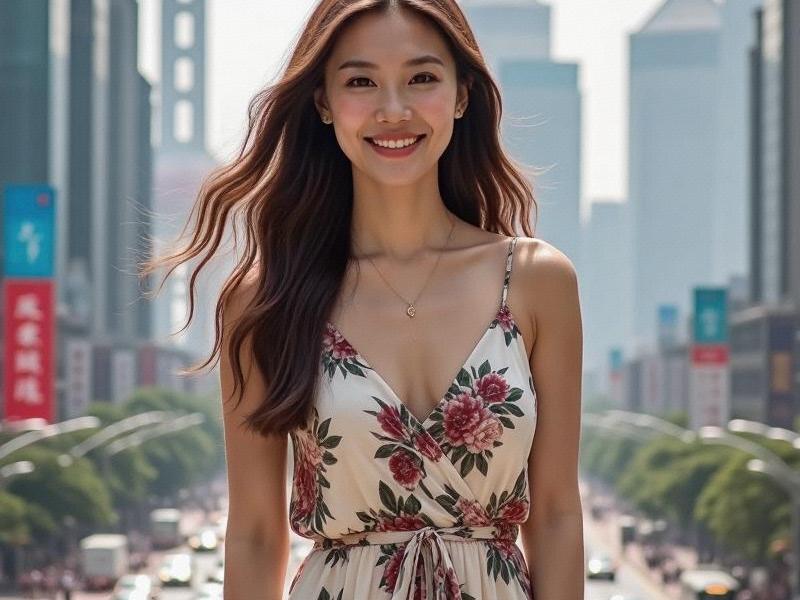Shanghai Style: Decoding the Allure of China's Most Fashionable Women
⏱ 2025-06-09 00:59 🔖 上海龙凤419
📢0℃

Section 1: Historical Roots of Shanghai Beauty
Shanghai's unique beauty standards trace back to:
- 1920s "Modern Girls" movement combining qipao with Western flapper styles
- 1930s hair salon culture introducing permanent waves
- 1980s改革开放后 cosmetic market liberalization
- 2000s K-beauty influence merging with local traditions
Contemporary Shanghai Beauty Standards
2025 survey data reveals:
- 68% Shanghai women spend 15-30% income on beauty
- Top 3 aesthetic priorities: luminous skin (92%), slender figure (85%), elegant posture (79%)
- Average daily beauty routine: 47 minutes (vs. 32min nationally)
The Shanghai Makeup Philosophy
上海龙凤419自荐 Distinctive elements include:
- "Glass skin" achieved through 10-step routines
- Natural gradient lips replacing bold colors
- Straight "black waterfall" hair as status symbol
- Minimal eye makeup emphasizing natural features
Fashion Capitals of Shanghai
Where style evolves:
- West Nanjing Road luxury flagship boutiques
- Donghu Road independent designer studios
- Taikang Lane vintage markets
- Xintiandi concept stores
Influential Shanghai Beauty Icons
上海花千坊爱上海 Trendsetters shaping local standards:
- Actress Ma Yili's "effortless elegance" look
- Olympic swimmer Liu Xiang's athletic beauty
- Tech entrepreneur Yang Wenyu's power dressing
- Douyin star Lin Lin's "girl-next-door" aesthetic
Economic Impact of Beauty Culture
Industry statistics:
- $3.2 billion annual beauty market
- 28,000 beauty salons citywide
- 12% annual growth in cosmetic surgery
- 45% of livestream commerce is beauty-related
Cultural Contradictions
上海花千坊419 Modern Shanghai women navigate:
- Traditional "fair skin" ideals vs. tanning trends
- Natural beauty movement vs. perfection standards
- Western fashion vs. guochao (national trend) clothing
- Career demands vs. appearance expectations
Future Trends Emerging
Next-wave developments:
- AI-powered personalized skincare
- Sustainable luxury beauty products
- "Smart makeup" with mood-changing colors
- Unisex beauty products gaining popularity
Shanghai's beauty culture continues to evolve, maintaining its position as China's style capital while developing increasingly global yet distinctive aesthetics.
"Concrete Palimpsest: How Shanghai Writes Its Future Without Erasing Its Past"Beyond Beauty: The Multidimensional Lives of Shanghai's Modern WomenShanghai and Beyond: Exploring the Yangtze River Delta's Economic and Cultural PowerhouseThe Shanghai Glow: Decoding the Allure of China's Most Stylish WomenShanghai: A Dynamic Lifestyle MosaicShanghai's Entertainment Revolution: How Nightclubs Are Driving the City's Cultural RenaissanceNightlife in Shanghai: A Vivid Tapestry of Entertainment and CultureQuantum Canals and Smart Fields: Shanghai's Dual Revolution Reshapes the Yangtze DeltaShanghai's Nightlife Renaissance: How Entertainment Venues Are Redefining Urban LeisureShanghai's Constellation: How China's Financial Capital Radiates Influence Across the Yangtze Delta
Shanghai's New Generation of Women: Redefining Beauty and Ambition in China's Global City"Decoding Shanghai's Nightlife Renaissance: How Entertainment Clubs Became Cultural Powerhouses"Shanghai 2030: The Making of a 22nd Century MetropolisThe Yangtze Delta Megaregion: Shanghai's Economic Spillover Effect on Neighboring CitiesThe New Golden Age: Shanghai's Entertainment Clubs Redefining Urban NightlifeNeon Renaissance: How Shanghai's Entertainment Clubs Are Reinventing Urban NightlifeShanghai's Feminine Revolution: How Urban Women Are Redefining Chinese Beauty StandardsThe Yangtze Delta Megaregion: Shanghai's Symbiotic Relationship with Neighboring CitiesShanghai Glamour: The Evolution of Beauty Standards in China's Cosmopolitan CapitalShanghai After Dark: How the City's Entertainment Clubs Became Global Trendsetters

